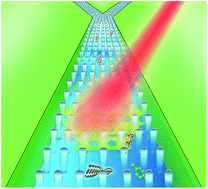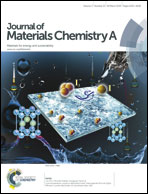Plasmonic nanopillar array embedded microfluidic chips: an in situ SERS monitoring platform†
Abstract
The incorporation of surface enhanced Raman spectroscopy (SERS) detection into microfluidic channels enables fast, damage-free and information-rich sensing and analysis, and it thereby triggers considerable research interest. However, conventional SERS systems rely on narrow spacing generated intense electromagnetic (EM) fields and usually suffer from low reproducibility, especially in the presence of dynamic liquids. In this paper, we report the fabrication of Ag/Si nanopillar (NP) array embedded microfluidic chips as an in situ SERS monitoring platform. This on-chip SERS system not only provides highly reproducible SERS signals in liquid based detection, but also is capable of large biomolecule detection, demonstrated by the detection of R6G and natural source double strand DNA. Such excellent SERS performances are attributed to the wide range and uniform enhancement field yielded by the propagating surface plasmon on an ordered Ag coated Si nanopillar structure upon laser illumination. Taking these advantages and using 4-ABT as a test case, we demonstrate that this SERS equipped microfluidic chip allows the in situ reaction of different chemicals and is capable of real-time monitoring of the reaction process.


 Please wait while we load your content...
Please wait while we load your content...